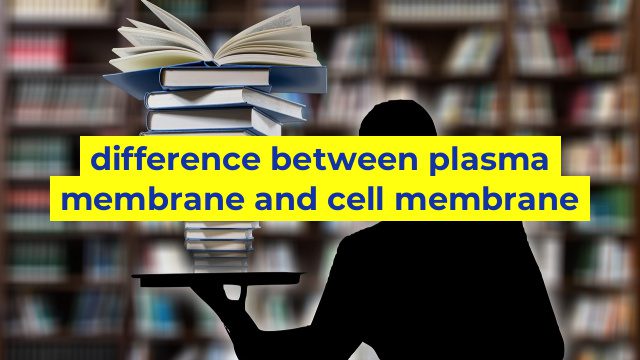The Difference Between Plasma Membrane and Cell Membrane
Introduction
The cell membrane is a vital part of every living cell, as it separates the cell from the outside environment. However, the term “cell membrane” is often used interchangeably with the term “plasma membrane”. While they both perform the same function, there are differences between these two types of membranes. This article will explore these differences in detail.
What Is Plasma Membrane?
Plasma membrane is a type of cell membrane. It is a thin layer of lipids and proteins that surrounds the cell, forming a barrier between the inside and outside of the cell. Plasma membrane is made up of phospholipids, cholesterol, and proteins. These molecules are arranged in a bilayer, with the hydrophilic heads of the phospholipids facing outwards, and the hydrophobic tails facing inwards.
What Is Cell Membrane?
The term “cell membrane” is often used to refer to the plasma membrane, but it actually refers to any membrane surrounding a cell. This includes both the plasma membrane and other membranes such as the nuclear membrane and the mitochondrial membrane. Cell membrane serves as the outermost layer of the cell, and separates the cell from the extracellular environment.
Key Differences Between Plasma Membrane and Cell Membrane
While plasma membrane and cell membrane are similar in their function, they differ in several key ways.
1. Composition: Plasma membrane is composed of lipids, proteins, and cholesterol, while cell membrane can be composed of a variety of molecules, depending on the location and function of the membrane.
2. Location: Plasma membrane is always located at the outermost layer of the cell, while cell membrane can be found in various locations throughout the cell.
3. Function: The main function of plasma membrane is to regulate the exchange of materials between the cell and its environment. The function of cell membrane, on the other hand, can be more specialized, depending on its location and the needs of the cell.
4. Proteins: Plasma membrane contains a high concentration of proteins, which make up around half of the membrane’s mass. Cell membrane can also contain proteins, but the concentration and types of proteins vary depending on the specific membrane.
Conclusion
In summary, the terms “cell membrane” and “plasma membrane” are often used interchangeably, but they have some key differences. Plasma membrane is a specific type of cell membrane that is composed of lipids, proteins, and cholesterol, and is located at the outermost layer of the cell. Cell membrane refers to any membrane surrounding a cell and can be composed of a variety of molecules depending on the location and function. Understanding these differences can help to clarify the roles and functions of different types of membranes in the cell.
Table difference between plasma membrane and cell membrane
| Plasma Membrane | Cell Membrane |
|---|---|
| Found in prokaryotic and eukaryotic cells | Found in eukaryotic cells only |
| Composed of phospholipid bilayer, proteins and carbohydrates | Composed of phospholipid bilayer and proteins |
| The outermost boundary of a cell | Encloses the cytoplasm and organelles within a cell |
| Selectively permeable, controls movement of substances in and out of the cell | Selectively permeable, controls movement of substances in and out of the cell |
| Involved in cell signaling, cell recognition and adhesion | Involved in cell signaling, cell recognition and adhesion |

